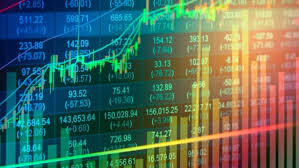
Global markets surged on Monday as Washington and Beijing announced a provisional halt in their escalating tariff conflict, prompting a wave of investor optimism tempered by caution over the path to a permanent settlement. In a highly anticipated result from two days of negotiations in Geneva, the two economic superpowers agreed to roll back recent tit-for-tat duties for the next 90 days, reducing U.S. tariffs on Chinese imports to 30 percent and Chinese levies on American goods to 10 percent.
The announcement triggered one of the strongest market rallies in recent weeks. U.S. stock futures jumped nearly 3 percent, signaling a robust opening on Wall Street, while the dollar vaulted to its highest level against a basket of major currencies in almost a month. Safe-haven assets such as gold, the yen and Swiss franc slid, reflecting diminished investor appetite for protection against trade-related uncertainty. Government bond prices fell, driving 10-year U.S. Treasury yields above 4.4 percent—levels not seen since late April.
“This is long-term positive, plus 90 days of uncertainty,” said Charles Wang, chairman of Shenzhen Dragon Pacific Capital Management. Wang noted that while the temporary reprieve offers a window for markets to breathe, it also ushers in renewed speculation over the depth and durability of any ultimate accord.
State Street Global Markets’ head of macro strategy, Michael Metcalfe, estimated that the agreement, once enacted, implies an average effective tariff rate of roughly 15 percent on bilateral trade—well above pre-trade war levels but markedly lower than the triple-digit levies imposed in April. “Given where expectations were, it’s a net positive. You’ve basically reversed the reciprocal tariff announcement and reset back to where we were on May 1,” he explained.
A Tactical Retreat, Not an End
Investors have long feared that a protracted trade war between the world’s two largest economies could derail global growth, disrupt supply chains and dampen corporate earnings. After U.S. President Donald Trump imposed duties reaching 145 percent on certain Chinese goods in early April—and China retaliated with tariffs of up to 125 percent on U.S. exports—nearly $600 billion in annual two-way trade ground to a halt.
The sudden truce emerged after intensive discussions in Geneva, in which U.S. Treasury Secretary Scott Bessent and Trade Representative Jamieson Greer faced their Chinese counterparts for the first high-level encounter since the spring tariff blitz. Officials agreed to shelve more than 90 percent of the most recent tariff hikes and paused planned increases set to take effect in coming weeks.
Despite the welcome market reaction, analysts warn that the deal merely defers a more challenging negotiation over the structural issues at the heart of the dispute—ranging from intellectual property rights and forced technology transfers to state subsidies and market access. “This is only a three-month temporary reduction of tariffs. The two sides will spend months, probably, to come up with a resolution or reach a final trade deal, but this is a very good starting point,” said Zhiwei Zhang, chief economist at Pinpoint Asset Management in Hong Kong.
Jane Foley, head of FX strategy at Rabobank, echoed the sentiment of guarded optimism. “There is more confidence that these tariffs will not have the devastating impact many feared, but it does not mean a return to the pre-Trump status quo,” she said. Foley pointed out that while the truce alleviates immediate stresses on global growth forecasts, investors remain uncertain where tariffs will ultimately settle and how they will influence central bank policies.
Scope for Broader Policy Shifts
In addition to trade frictions, market focus is shifting toward other potential sources of policy volatility. With tariff revenues set to decline over the next three months, attention may turn to Trump’s proposed fiscal measures—particularly fresh tax cuts—and their implications for the U.S. budget deficit. Metcalfe cautioned that “the policy uncertainty hasn’t gone away; it’s simply moved on to a new area.”
Meanwhile, central banks around the world have been vocal about the risks of slowing growth. Recent data from Europe and Asia have pointed to weaker manufacturing activity, while U.S. consumer confidence has wavered under the weight of escalating trade tensions. The Federal Reserve has signaled that it remains data-dependent and open to adjusting interest rate projections in light of external shocks.
Regional and Sectoral Winners and Losers
The tariff pause has uneven effects across industries and geographies. Export-oriented economies such as Germany, South Korea and Japan—beneficiaries of diverted supply chains—have seen their equity markets retrace some losses incurred during the height of the trade dispute. Chinese exporters, too, breathed a sigh of relief as the yuan strengthened to its highest level in six months, boosting competitiveness.
In the United States, technology and industrial sectors—which bore the brunt of initial levies—are poised for a rebound if duties remain at or below current thresholds. Agricultural producers, however, remain on edge, as many specialty crops have yet to be specifically addressed in exemptions. Both governments indicated that further tariff carve-outs could be discussed in upcoming talks.
Looking ahead, both sides have slated follow-up meetings before the 90-day moratorium expires in mid-August. Negotiators are under pressure to flesh out details on enforcement mechanisms, tariff rollback schedules and any broader framework for structural reforms. Should talks stall or public pressure intensify—particularly from domestic industries clamoring for more protective measures—there is a risk that tariffs could ratchet up again.
Complicating matters is the political calendar in Washington, with midterm elections looming later this year. Any perceived concession to China could spark backlash from lawmakers in both parties, potentially constraining the administration’s negotiating latitude. In Beijing, leadership consensus will be critical, as easing tariffs too far could be seen as yielding to U.S. economic coercion.
For now, investors remain poised between cautious relief and vigilant skepticism. The 90-day truce has granted a reprieve from the worst-case scenario of a trade free-for-all, but a durable détente will require addressing the deeper fissures in U.S.–China economic relations. Should talks falter in the coming months, financial markets may once again confront the full brunt of protectionist policies—testing the resilience of global growth and the resolve of policymakers on both sides of the Pacific.
(Source:www.reuters.com)
The announcement triggered one of the strongest market rallies in recent weeks. U.S. stock futures jumped nearly 3 percent, signaling a robust opening on Wall Street, while the dollar vaulted to its highest level against a basket of major currencies in almost a month. Safe-haven assets such as gold, the yen and Swiss franc slid, reflecting diminished investor appetite for protection against trade-related uncertainty. Government bond prices fell, driving 10-year U.S. Treasury yields above 4.4 percent—levels not seen since late April.
“This is long-term positive, plus 90 days of uncertainty,” said Charles Wang, chairman of Shenzhen Dragon Pacific Capital Management. Wang noted that while the temporary reprieve offers a window for markets to breathe, it also ushers in renewed speculation over the depth and durability of any ultimate accord.
State Street Global Markets’ head of macro strategy, Michael Metcalfe, estimated that the agreement, once enacted, implies an average effective tariff rate of roughly 15 percent on bilateral trade—well above pre-trade war levels but markedly lower than the triple-digit levies imposed in April. “Given where expectations were, it’s a net positive. You’ve basically reversed the reciprocal tariff announcement and reset back to where we were on May 1,” he explained.
A Tactical Retreat, Not an End
Investors have long feared that a protracted trade war between the world’s two largest economies could derail global growth, disrupt supply chains and dampen corporate earnings. After U.S. President Donald Trump imposed duties reaching 145 percent on certain Chinese goods in early April—and China retaliated with tariffs of up to 125 percent on U.S. exports—nearly $600 billion in annual two-way trade ground to a halt.
The sudden truce emerged after intensive discussions in Geneva, in which U.S. Treasury Secretary Scott Bessent and Trade Representative Jamieson Greer faced their Chinese counterparts for the first high-level encounter since the spring tariff blitz. Officials agreed to shelve more than 90 percent of the most recent tariff hikes and paused planned increases set to take effect in coming weeks.
Despite the welcome market reaction, analysts warn that the deal merely defers a more challenging negotiation over the structural issues at the heart of the dispute—ranging from intellectual property rights and forced technology transfers to state subsidies and market access. “This is only a three-month temporary reduction of tariffs. The two sides will spend months, probably, to come up with a resolution or reach a final trade deal, but this is a very good starting point,” said Zhiwei Zhang, chief economist at Pinpoint Asset Management in Hong Kong.
Jane Foley, head of FX strategy at Rabobank, echoed the sentiment of guarded optimism. “There is more confidence that these tariffs will not have the devastating impact many feared, but it does not mean a return to the pre-Trump status quo,” she said. Foley pointed out that while the truce alleviates immediate stresses on global growth forecasts, investors remain uncertain where tariffs will ultimately settle and how they will influence central bank policies.
Scope for Broader Policy Shifts
In addition to trade frictions, market focus is shifting toward other potential sources of policy volatility. With tariff revenues set to decline over the next three months, attention may turn to Trump’s proposed fiscal measures—particularly fresh tax cuts—and their implications for the U.S. budget deficit. Metcalfe cautioned that “the policy uncertainty hasn’t gone away; it’s simply moved on to a new area.”
Meanwhile, central banks around the world have been vocal about the risks of slowing growth. Recent data from Europe and Asia have pointed to weaker manufacturing activity, while U.S. consumer confidence has wavered under the weight of escalating trade tensions. The Federal Reserve has signaled that it remains data-dependent and open to adjusting interest rate projections in light of external shocks.
Regional and Sectoral Winners and Losers
The tariff pause has uneven effects across industries and geographies. Export-oriented economies such as Germany, South Korea and Japan—beneficiaries of diverted supply chains—have seen their equity markets retrace some losses incurred during the height of the trade dispute. Chinese exporters, too, breathed a sigh of relief as the yuan strengthened to its highest level in six months, boosting competitiveness.
In the United States, technology and industrial sectors—which bore the brunt of initial levies—are poised for a rebound if duties remain at or below current thresholds. Agricultural producers, however, remain on edge, as many specialty crops have yet to be specifically addressed in exemptions. Both governments indicated that further tariff carve-outs could be discussed in upcoming talks.
Looking ahead, both sides have slated follow-up meetings before the 90-day moratorium expires in mid-August. Negotiators are under pressure to flesh out details on enforcement mechanisms, tariff rollback schedules and any broader framework for structural reforms. Should talks stall or public pressure intensify—particularly from domestic industries clamoring for more protective measures—there is a risk that tariffs could ratchet up again.
Complicating matters is the political calendar in Washington, with midterm elections looming later this year. Any perceived concession to China could spark backlash from lawmakers in both parties, potentially constraining the administration’s negotiating latitude. In Beijing, leadership consensus will be critical, as easing tariffs too far could be seen as yielding to U.S. economic coercion.
For now, investors remain poised between cautious relief and vigilant skepticism. The 90-day truce has granted a reprieve from the worst-case scenario of a trade free-for-all, but a durable détente will require addressing the deeper fissures in U.S.–China economic relations. Should talks falter in the coming months, financial markets may once again confront the full brunt of protectionist policies—testing the resilience of global growth and the resolve of policymakers on both sides of the Pacific.
(Source:www.reuters.com)





